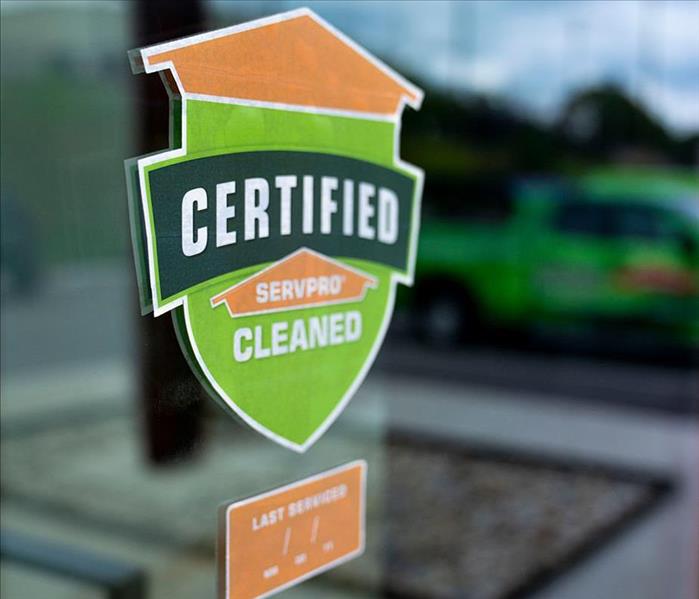Key Things to Look for as Businesses Reopen
6/10/2020 (Permalink)
Aside from making sure the businesses you patron are Certified: SERVPRO Cleaned, there are a few other things to look for when evaluating if the property is safe for you and your family.
1. Look for “signs” of clean.
When you first walk into a building, you should immediately take inventory of whether the space has been cleaned recently. A clean space should be free of visible dirt and trash. Fingerprints on doors and windows and stains on countertops and tables may indicate a relaxed attitude towards cleaning. High-touch surfaces should be disinfected regularly. Oftentimes, you can smell a freshly cleaned facility. Standalone sanitation stations are a good sign that preventing the spread of germs is a priority. You may notice physical signage stating when the space was last cleaned, who is servicing the facility, or details of a regular cleaning regimen. Many businesses are also hanging signage to remind guests and employees of proper social distancing standards.
2. What adjustments have staff made?
Everyone has a responsibility to stop the spread of the coronavirus. The staff of retail businesses, restaurants, or community centers should be properly trained in CDC-approved cleaning methods. If employees are not using proper techniques or products, it might be because of a lack of proper training. Likewise, look for staff who are wearing gloves and masks and who are practicing safe distancing when interacting with customers. It is obvious when the business is not protecting its employees. People should come before profits.
3. What adjustments has the business made to the physical space?
Many businesses and facilities have made physical changes to their buildings to help reduce the risk of spreading illness. The business may adjust the traffic flow of patrons to prevent congested areas. Contactless points-of-sale are becoming more common, and many businesses are constructing barriers between employees and guests. Some are even adding markers on floors to indicate safe distances. One good way to help prevent the spread of infection is to reduce the
number of touch points, such as propping doors open and opening windows to increase airflow. Some businesses are going a step further and reducing the number of guests allowed inside the space at one time.
4. Does it look like “business as usual?”
In the same way that the country changed following 9/11, what we once knew as “normal” may change forever. If a facility is still operating in the way it did before the coronavirus pandemic, there is a good chance the managers or staff are not taking the illness seriously and are not prioritizing the health of their employees and guests. Many have reduced their hours of operation or offered times when they are open only for at-risk individuals, such as senior citizens or those who are immunocompromised. Before stepping out of your door, check the company’s social media pages or their website for communications about their hours and the steps they are taking to protect patrons. These locations should be following federal, state, and local mandates regarding safety.




 24/7 Emergency Service
24/7 Emergency Service
